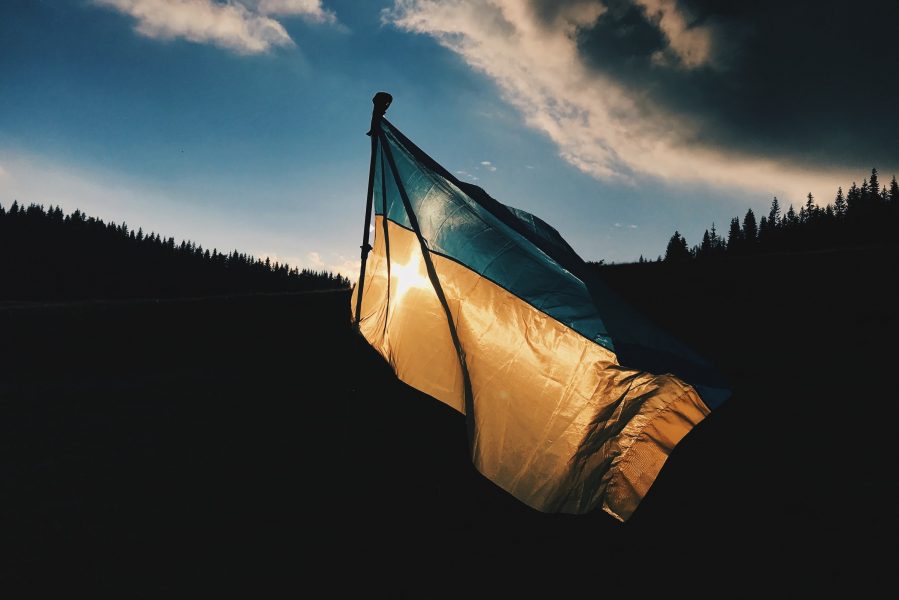Ukraine: culture in crisis

Isabel Caine examines the impact of war on Ukraine’s cultural heritage.
The invasion of Ukraine by Russian President Vladimir Putin has had devastating consequences and sent shockwaves around the world, sparking the fastest-growing refugee crisis in Europe since World War Two. However, the war in Ukraine has also had another, tragic consequence. Ukraine’s rich cultural heritage is on the brink of being destroyed which has sparked another kind of evacuation.
Even before President Putin invaded Ukraine, the country was already planning the evacuation of valuable pieces of art. Every Ukrainian museum has a list of works to be evacuated in case of an invasion, a “so-called red list”, according to Kyrylo Lipatov, deputy director for research and exhibitions at the National Art Museum in Odessa. More than a month before the invasion, for example, three museums in Odessa began preparations to move works to the west of Ukraine. The operation was not publicised and referred to as an ‘exhibition loan’ to avoid attracting attention.
In Lviv, museum walls are bare. In Odessa, there are fortifications around the National Academic Theatre of Opera and Ballet
Since the invasion, the rescue mission has continued. In Lviv, museum walls are bare. In Odessa, there are fortifications around the National Academic Theatre of Opera and Ballet, and barricades to deter looters. In Kharkiv, the Literary Museum has successfully evacuated its collection of rare books, manuscripts and photos. Collections like this are vital for the preservation of Ukraine’s cultural heritage; the collection documents Ukraine’s literary resistance to Russian dominance.
Even symbolic gestures reflect the heroic efforts to protect important works of art and cultural symbols of Ukraine. In Odessa, volunteers have placed sandbags around public works of art such as a statue of the city’s first mayor, the Duke of Richelieu.
Libraries, churches and architectural masterpieces have also suffered as a result of the invasion. Efforts are being taken not just to protect well-known works of art, but also Ukraine’s smaller museums and cultural sites, as well as their staff members. International agencies have been working to raise funds to protect works of art and provide aid to those employees still in Ukraine. The National Museum of Warsaw in Poland is working with staff to welcome employees and their families from Lviv’s National Gallery of Art.
The documentation of works is also key. By documenting works that could not be saved, it is possible to both aid reconstruction and also provide evidence of possible war crimes. The Ukrainian government has set up a database to track alleged war crimes against the country’s culture and heritage.
The magnitude of the rescue mission is, however, overwhelming and tragically it is not possible to save all the works of art. In Kharkiv, one of Ukraine’s largest cities, the windows of the city’s main art museum were blown out. The 25,000 artworks housed by the Kharkiv Art Museum were left exposed to the elements before they were taken into storage. The city’s opera and ballet theatres have also been bombed in Russian airstrikes.
Elsewhere, the Babi Yar Holocaust Memorial Centre in Kyiv has also been damaged in the invasion and the Popov Manor House museum has reportedly been looted by Russian soldiers. In Mariupol, the Kuinsdzhi Art Museum was destroyed during an airstrike. Named in honour of Ukrainian artist Arkhip Kuindzhi, the museum housed more than 600 paintings by various Ukrainian artists of the twentieth-century. “The country’s whole territory and all its monuments, its heritage from various cultures — tangible and intangible — are today under threat of destruction,” says Ukraine Deputy Culture Minister Kateryna Chueva.
There is a bitter irony to this tragic situation, as many Ukrainian museums also contain works by Russian artists
There is a bitter irony to this tragic situation, as many Ukrainian museums also contain works by Russian artists. Works by the renowned Russian artist Ilya Repin, for example, are housed in the Odessa Fine Arts Museum and the Kharkiv Art Museum. Ukraine is also fighting to protect the works of Russian artists from being destroyed by their own country.
In response to this catastrophe, a Museum Crisis Centre has been formed. The centre has already helped secure over 400 works in storage and provides essential aid to museum workers in areas under attack. Its director, Olha Honchar, believes that the attacks are not coincidental: “It has become quite clear now for the whole world that Russia bombs museums, archives and theatres not by accident”. Many argue that President Putin wants to destroy Ukraine’s national identity in a refusal to recognise the country as separate from Russia. “Russians have a precise aim of destroying our culture, as part of our identity, as something that distinguishes Ukraine from Russia”, says Honchar.
There are, however fleeting, some glimpses of hope. The works of Maria Prymachenko were also believed to have been destroyed by Russian forces after the Ivankiv Historical and Local History Museum in which they were housed caught fire. It was thought that around 25 of Prymachenko’s works were caught in the blaze. However, one man allegedly managed to save the paintings from the fire, according to the Maria Prymachenko Family Foundation.
Natalia Gnatiuk, a partner of the foundation, also believes that the attacks are an intentional attempt to destroy Ukrainian culture: “It was the first building [in Ivankiv that was targeted] and the task of the occupants is to destroy our Ukrainian roots, to destroy our Ukrainian culture — they hate it”. The foundation now fears for the safety of both man and paintings.
However, Maria Prymachenko has become a symbol of hope for the country. The artist’s vibrant work is firmly rooted in Ukrainian cultural heritage and Prymachenko is something of an icon of the country’s identity. Prymachenko’s painting “A Dove Has Spread Her Wings and Asks for Peace” (1982) is becoming a symbol of hope for Ukraine as the country fights to protect its people and cultural identity.


